
A lesson to introduce ISearch to young children. Children will research information on animals.
- Subject:
- Information, Media and Technological Literacy
- Material Type:
- Lesson Plan
- Author:
- Melanie Moore
- Date Added:
- 10/11/2019

A lesson to introduce ISearch to young children. Children will research information on animals.

Children and adults enjoy participating in Lois Ehlert's colorful books. She discusses her work in this video interview with Reading Rockets. Also included at the site are biographical notes, a transcript of the interview and a list of some of her books.

Research paper writing is a lofty goal for kindergarten students, but this lesson will expose them to the process without being overwhelming. Students will divide into teams to learn about ocean creatures and then write a research paper and orally present it to the class. Included are pictures and videos of the lesson in action.

In this lesson, students will give an opinion on the best part of the story "Oh My! It's Apple Pie!" and validate why it is their favorite. Included are student samples, an assessment sample, templates, and videos of the lesson in action.
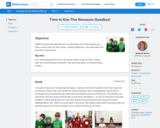
In this lesson, students will choose their favorite from an assortment of Dr. Seuss books and state a reason why for their choice. Examples of student work are included. Students will also have fun dressing up as their favorite Dr. Seuss character for a culminating activity.
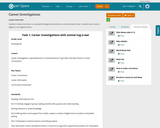
Students create a brochure or a pamphlet designed to promote an animal related career. Students can create a digital or non-digital version.

A very useful lesson that incorporates the process of collaboration to elementary students. Students brainstorm and use prewriting strategies to write a group story.

Lesson in which students engage in an entire-group revising process, using a story which has already been written by the group. An excellent follow-up lesson to the "prewriting and drafting" lesson.
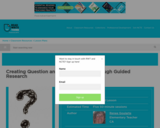
Contains plans for five lessons that develop research skills in primary students by having them create their own question and answer books. In addition to objectives and standards, this instructional plan contains links to sites used in the lessons as well as assessment and reflection activities.
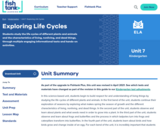
Students study the life cycles of different plants and animals and the characteristics of living, nonliving, and dead things, through multiple engaging informational texts and hands-on activities.

Students explore the works of four award-winning authors and illustrators, Grace Lin, Yuyi Morales, Monica Brown and Jerry Pinkney, learning about their lives and inspirations.

Lesson that introduces the concepts of nonfiction to elementary students. Through reading and interactive lessons, students engage the genre of nonfiction and begin to write their own examples.

A review of "The Keeping Quilt" by Patricia Polacco, a story about a Russian immigrant mother and family as well as other resources for teaching young readers.

Lions and Tigers and Bears OH-my! Help young students practice their research and presentation skills with this fun, hands-on animal research and presentation project.
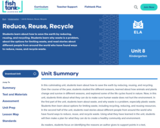
Students learn about how to save the earth by reducing, reusing, and recycling. Students learn why waste is a problem, about the options for limiting waste, and read stories about different people from around the world who have found ways to reduce, reuse, and recycle waste.
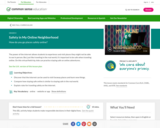
How do you go places safely online? The power of the internet allows students to experience and visit places they might not be able to see in person. But, just like traveling in the real world, it's important to be safe when traveling online. On this virtual field trip, kids can practice staying safe on online adventures. Approximately 30 mins.
LESSON OBJECTIVES: Discover that the internet can be used to visit faraway places and learn new things. Compare how staying safe online is similar to staying safe in the real world. Explain rules for traveling safely on the internet.

In this video from GreatSchools, viewers will observe strategies that first graders use as they research topics and organize new information. Observers will note the conversations about what they learn and examples of note taking. [1:45]

Contains plans for lessons that help students explore the nonfiction genre by doing inquiry-based research on animals. In addition to objectives and standards, this instructional plan contains links to sites used in the lessons as well as assessment and reflection activities.
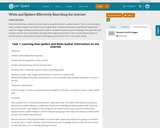
Most early elementary students are brand new to using the internet to onduct research. This is a concrete, gross-motor activity to explore how internet search engines work. Students will practice using different keywords to search for images relating to the life cycle of a flower. Students should have prior knowledge of the plant life cycle, as well as the life cycles of butterflies and frogs before beginning the lesson. This is an introductory lesson on internet research and should take place at the beginning of the unit. This is a one sesion activity.